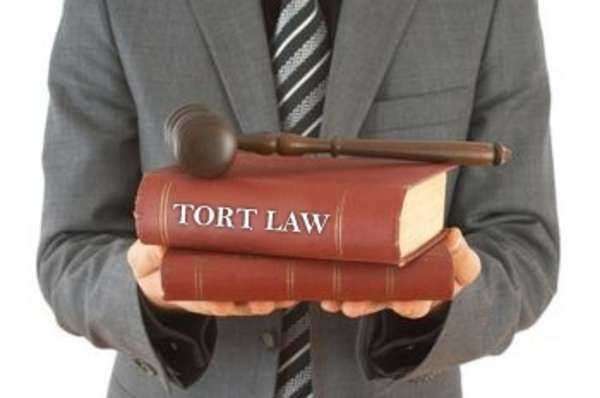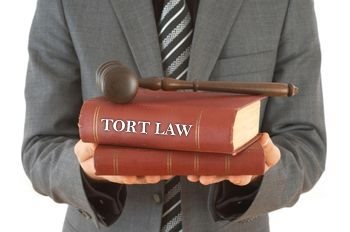What You Should Know About Damages in Tort Law





Negligent torts are the most prevalent type of tort. Negligent torts are not deliberate actions, but instead present when an individual or entity fails to act as a reasonable person to someone whom he or she owes a duty to. The negligent action found in this particular tort leads to a personal injury or monetary damages.
The elements which constitute a negligent tort are the following: a person must owe a duty or service to the victim in question; the individual who owes the duty must violate the promise or obligation; an injury then must arise because of that specific violation; and the injury causes must have been reasonably foreseeable as a result of the person’s negligent actions. Contact a negligence lawyer to acquire legal advice and assistance.
To succeed in a negligent action, the party who sustained the injury must prove the aforementioned elements in a negligent tort claim or hearing. A negligent tort can be summed up as an individual’s failure to reasonably exercise logical or caring actions. Examples of a negligent tort claim can include: slips or falls, the majority of medical malpractice cases, and car accidents.





A tort is a civil breach committed against another in which the injured party can sue for damages. In personal injury cases, the injured party will attempt to receive compensation with the representation of a personal injury lawyer in order to recover from damages incurred. Tort law decides whether a person should be held legally responsible for injury against another, and what type of compensation the injured party is entitled to.
There are four elements to tort law: duty, breach of duty, causation, and injury. In order to claim damages, there must be a breach in the duty of the defendant towards the plaintiff, which results in an injury. The three main types of torts are negligence, strict liability (product liability), and intentional torts.
All tortious charges of intentional interference with person/property involve intent, which provides for a civil wrong, knowingly committed by the offender. This contrasts with torts of negligence, which results from a lack of concern or responsibility on behalf of the offender. These damages are dealt with through civil litigation.
When a plaintiff accuses a defendant of an intentional tort, it is the defendant’s responsibility to identify any justifications for his actions that may excuse him from liability. In tort law, there are several privileges that a defendant may apprehend, in order to avoid liability.
It is up to the courts to determine whether the defendant’s privilege excuses him from liability. They need to conclude on whether the defendant had consent, permission by the plaintiff, or whether the plaintiff was defending himself, his property, or another person. If the defendant is able to establish privilege, then it is said that he has not committed a tortious act and will not be held liable.
There are certain elements that are required to prove that a defendant acted negligently. There is a specific code of conduct that all people are expected to follow and there is a duty of the public to act in a certain way, which reduces the risk of harm to others.
Negligence can only be claimed by an injured plaintiff, whose interests have actually been interfered with. This portrays that a plaintiff must prove his injuries, and prove that they were caused by the defendant. This proximate cause is the link between the defendant’s actions and the plaintiff’s injuries.
There is a statute of limitations in negligence cases, however, there are several rules, such as discovery and continuing negligence, which may excuse a plaintiff from the statute of limitations.
The necessity for a negligence case to be tried in a court of law is essential and evident. Tort law, like any other law, is tough to decide upon when an enforcement or violation issue arises and is furthermore tedious.
In negligence cases, a court appoints a jury to make a decision upon a case based on the direct or circumstantial evidence that is available to them.
The burden of proof a plaintiff faces in a case relates to four elements of proof that must exist in order for them to be able to prove that a negligent act not only existed but the fact that the act by a defendant, led to the injury sustained by the plaintiff.
The name given to the direct cause of an accident, or incident leading to injury, is referred to as ‘proximate’. The term proximate has long been known to mean near or in the vicinity of, not actual. This gives a misconception to the name as if the cause was nearly opposed to the actual one.
Other issues arise deeper within proximate cause, and that is with the scope of liability and its extent. Controversy exists as to where liability should be extended to a defendant, based on their responsibility or duty.
Joint tortfeasors, seen as equally liable for the committing of a tort, usually can be combined under one complaint. This is known as a “joinder of defendants”. In a case similar to this, one significant reasoning behind its institution besides the commonality that the defendants share in their joint action is that of the “judicial economy.”
In reference to this term, the court is making the decision that placing all defendants under one sole complaint will be the most appropriate option in terms of efficiency and, ultimately, cost-effectiveness for the judicial system itself.
Due to the mounting quantities of cases arising daily, this practice is employed as a worthwhile alternative, especially when an occasion such as that of joint tortfeasors comes about.
In legal terms, duty is seen as an individual’s obligation to act in a manner conducive to the well being of everyone around them, such as the prevention of any “foreseeable injury to a victim.” Such a term that best represents this obligation is that of a “duty of care”, or even “good Samaritan” to an extent.
Duty, itself, serves two other important functions for societal concerns attached to tort law. These include a “general principle” and a “limitation.” A general principle provides precedence for future cases, while limitation sets forth the “boundaries” for which liability may exist for individuals involved in an incident. The actual application of this term comes in the form of its existence at the “abstract level” and “in fact or problem”.
The concerns for areas outside of the premises of a given property deal with the condition of such property. This is in direct regard to certain factors and attributes such as structural or fixtures on the property that could have an effect on the immediate areas surrounding it.
The term trespassing adults refers to any person who has been found to be entering, occupying, or traveling through a property that is owned by someone else, without their permission or consent. Licensees are persons that are given a license, as a form of permission, to enter a property lawfully.
Such persons are to enter the property for a reason that does not have to be in the best interest or benefit of the owner. By being granted the license to enter and occupy such property, this individual is exempt from trespassing status and is completely abiding by the law.
Contributory negligence is one of the most commonly used negligence defenses. The defendant attempts to deny the plaintiff the right to action, by claiming that the plaintiff’s own negligence played a large role in his injuries. In contributory negligence, both parties are guilty of negligence, but the plaintiff is not awarded any damages.
The last clear chance rule is an exception to the contributory negligence defense which permits the plaintiff more freedom in taking action against a defendant when the plaintiff is also guilty of negligence. The last clear chance refers to an instance where the defendant had the last clear chance to avoid injuring the plaintiff but did not take the opportunity. In cases where both the plaintiff and the defendant are both guilty of some degree of negligence, contributory negligence places liability solely on the plaintiff.
Vicarious liability represents a venue in which individuals may be “vicariously” held accountable for the actions of individuals other than themselves. In these cases, the ones held liable are those who have some type of legal claim to the actual individuals at fault. Two such persons may be parents to mischievous children or employers to careless employees, as well as a guardian.
In each circumstance, the liable individuals are taking the place of others. A joint enterprise is described as an action, which involves two or more individuals, usually with monetary considerations involved. Additional elements that comprise it include a common goal as well as concurrent rights to take the lead of the operation.
The basic structure that encompasses that of strict liability is the fact that liability is maintained despite any intent otherwise. In this way, it matters only that the action was performed to its fruition and an eventual injury of another. Certain areas in which safety laws have had to come to the forefront concerning liability include incidents involving product defects.
In cases such as these, consumers must only prove that their injuries stemmed directly from the product in question in order to garner an appropriate judgment from the court. The purpose behind such a seemingly rigid form of the legislature is to prevent future occurrences from happening by providing precedence to fall in line with.
In tort cases, victims often receive compensation, including monetary judgments. However, some judgments include other factors such as the accused, publicly admitting guilt. In most jurisdictions, the courts have placed limits, or judgment ranges, which depend on specific factors found in the case.
In most cases, victims that sustain injuries receive a judgment that maxes out, regardless of how painful and permanent the injury may be. However, the courts can award other judgments, in addition to the one made for specific bodily injury.
In modern tort law, there are different types of nuisances: public, private, and absolute. A private nuisance affects one individual’s enjoyment of his land, while a public nuisance affects a larger amount of citizens or the public in general.
Absolute nuisances are nuisances for which the defendant is strictly liable. The simple form of nuisance is described as an act that takes away from rights to the use, and enjoyment of land that every owner has.
Products Liability is a field of tort law which concerns the responsibility of the manufacturer or vendor of a product to ensure that products are safe and do not cause injury. Products subjected to liability include all consumer goods, medical devices, commercial/personal vehicles, aircraft, and consumable goods such as food and prescription drugs.
As it is the duty of a product vendor or manufacturer to produce/supply a product which will not cause harm during normal use, manufacturer/vendors of unsafe products are subject to recovery for damages.
Misrepresentation and nondisclosure form two fundamental bases for many actions represented under tort law. Any case where false or hidden information plays a significant part essentially implies a standard of care that reflects the negligence addressed by tort.
To phrase it more simply, the fact that information has been withheld or misrepresented directly implies a negligent situation. This means that among the various subsections of tort law, cases of misrepresentation and nondisclosure can prove to be the easiest to form a legal consensus of opinion on whether negligence has happened, due to the very idea that the act itself is a negligent action.
Misrepresentation and nondisclosure can take many forms, but generally, they refer to an act or service. they are usually rendered for compensation that does not fulfill their terms of promise, either because they misrepresent their ability to perform or fail to disclose elements that prevent adequate performance (like an unknown side effect for a product, or a conflict of interest in a case of service).
There are many remedies one may seek when a case of misrepresentation can be seen to have occurred, though the extent to which they fall under tort law or other forms of legal action is highly dependent on the specific legal system, as well as the nature of the misrepresentation. In nearly all cases, there is an obligation on the provider of a product or service to provide information either by law or by request, so as to adhere to all legal standards of accurate representation.
The term defamation refers to an abusive attack on a person’s character or to make false claims against someone in order to damage their good name. There are two forms of defamation that can be used: libel and slander. An unreasonable person may abuse the right of privilege in order to commit defamation against another person.
The right of privilege (or “qualified privilege”) being that a person has a right to make statements during the trial process. This privilege often protects against an unreasonable person who wishes to make defamation statements.
Misuse of Legal Procedure is a series of torts that involve the corrupt or undue filing of litigation for unlawful reasons. Public right of access to courts is granted on good faith that claimants will act with probable cause and honesty.
Conversely, when a plaintiff in a lawsuit is found to have initiated legal action for purposes of deliberate harassment or inconvenience of the defendant, or when the court terminates the suit in favor of the defense, the defense may seek damage compensation for losses incurred in the legal process. These losses may be qualified under charges of Malicious Prosecution, Wrongful Civil Proceedings, or Abuse of Process.
Domestic Relations is an evolving area of Tort Law which deals with a family’s inner workings. The evolution of Domestic Relations Tort has not only shaped the way that families may collect for damages or interference to the family unit itself resulting from tortious conduct; it has shaped the way husbands, wives, children, and legal guardians are viewed as legal entities.
Originally, under common law, children and wives were treated as chattels and functioned under a man’s proprietary rights. In the 1900s, several advances in Family Law provided for the legal rights of women and children to act as distinct legal entities from their husbands/fathers.
Survival and Wrongful Death are tort claims made after the death of an individual in an at-fault situation. This means that the deceased must be a victim of a tort, before death or at the time of death.
Survival actions are raised by the executives of the victim’s estate and are continuations of tort actions that the victim would have been entitled to raise in life. Wrongful death claims are made by surviving dependent’s for the loss of the decedent’s contributions to their lives.
Torts of Economic Relations are allegations of direct interference with business relationships, agreements, or prospects, which result in quantifiable losses. When suing for Torts of Economic Relations, it is important that the plaintiff be able to prove that the defendant acted intentionally with knowledge of his or her own actions and that the subsequent actions were injurious to the claimant in the form of economic losses. Torts of Economic Relations normally fall under classifications of Interference with Contractual Relations, Interference with Prospective Advantage, or claims of Injurious Falsehood.
In tort cases, there are certain intervening factors that allow individuals immunity, from their actions. Immunity implies either, that the person could not understand the risks associated with their actions or that they can not be held liable because they were acting on behalf of the government or other entities. Cases in which individuals are not likely to understand the possible outcomes of their actions include infant immunity or insanity immunity.
Infant immunity applies to minors that are too young to grasp the consequences of their actions. In addition, the minor must not have any intent to cause harm to a person or property. It can not be claimed that the minor did not understand the consequences of their actions if they intended the negative consequences that resulted from their actions.
Intent can not be present without an understanding of possible outcomes. In cases that involve infant immunity, the parents or guardians of the minor could be held liable for their actions, regardless of the minor’s understanding of the possible outcomes of those actions.
Insanity immunity can be utilized as a defense in cases where a person is deemed insane, or mentally incapable of understanding the possible outcomes of an action. In cases where insanity immunity is a factor, the caregiver of the person that acted in a manner that caused a negative outcome could be held liable in the same manner that a parent or guardian could be liable for a minor. In either case, the actor and those responsible for the care of the actor, could both be held liable for the action.

A Tort Lawyer is a legal practitioner who specializes in the practice, litigation, and handling of tort law; a tort, which is defined as a ‘wrong’, is a grievance or injury that is suffered, which can result in injury and/or damage. Amongst the most common issues of tort law are those of personally injury, general injury, and accidents.
The following terms comprise what is traditionally considered to be handled by a tort lawyer:
Intentional Tort
An intentional tort refers to an action performed by an individual onto another individual – or entity – with the intent to cause purposeful harm or damage; an example of this nature of tort is a physical attack.
Negligent Tort
A negligent tort is defined as unforeseen damage or injury sustained by an individual – or entity – as a result of negligence on the part of an individual or entity; and example of this nature of tort is an injury sustained as a result of a faulty product.
Strict Liability Tort
In tort law, when there is no clear delineation between both the party who is at fault, as well as the party considered to be the victim with regard to harm or injury sustained, a strict liability tort determines the nature of fault; this usually occurs as a result of a court case and subsequent judicial review of circumstantial details.